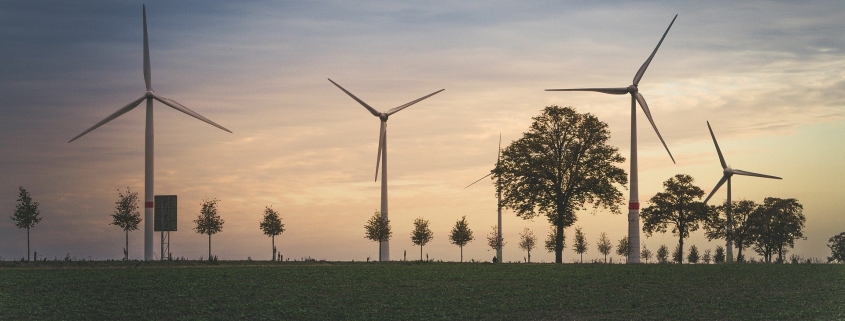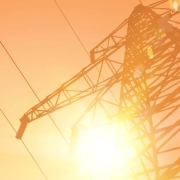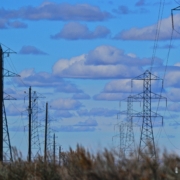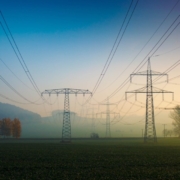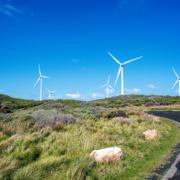Delays in building new transmission infrastructure will increase consumers’ bills.
New transmission electricity infrastructure is the crucial missing link in Australia’s transition to clean energy. A timely roll-out of transmission to connect new electricity generation is critical to ensure energy security and avoid delays that would lead to increased costs for consumers.
The problem
There is broad recognition of both the urgent need to replace ageing coal generators and the benefits of clean and low-cost renewable generation. Australia’s ageing coal power stations are withdrawing from the system more quickly than anticipated, leaving a shortfall in generation. Wind and solar technologies are now the cheapest form of generation per unit of energy and can be integrated with storage to provide dispatchable ‘firmed’ electricity.
To ensure the energy transition succeeds, Australia needs to build the equivalent of 25 per cent of today’s entire transmission grid, 10,000km, in less than 10 years. Currently, there are questions about who should pay for the new infrastructure so that the cost is shared by all those that benefit, and lengthy and uncertain approvals process that do nothing to ensure social license from and compensation of host communities.[1] This means transmission is not being approved and built fast enough.
Lack of transmission is already impacting consumers. States that made early commitments to large-scale renewable generation (in particular South Australia and the ACT) are experiencing some of the lowest electricity bills in the country. However, there is limited opportunity for new renewable generation capacity to enter the market, and cost-effective renewable energy generated in the south cannot be used in the eastern states. This means NSW and Queensland consumers are already being unnecessarily impacted by rising global coal and gas prices, and seeing significant increases in bills and unstable supply because of outages at coal-fired power stations (AEMO Quarterly Report April 2022).
The modelling
Nexa Advisory engaged Endgame Economics to provide evidence-based insights into the likely impact on consumers’ electricity bills (households and business) of delays to the required electricity transmission upgrade and build.[2]
The modelling assumes that renewable energy zones are built as planned, but that there are delays of one to four years, compared with the Australian Electricity Market Operator (AEMO)’s 2022 draft Integrated System Plan (ISP), in connecting that clean, low-cost generation to the wider market.
The modelling shows that:
- nearly all consumers experience the lowest prices if transmission is built according to AEMO’s ISP (compared with the delay scenarios).
- a delay of even one year in delivering new transmission results in higher bills for consumers. Business customers are impacted the most.
- as delays to the building of transmission get longer, the modelling demonstrates prices are higher and price spikes are more likely to occur more frequently.
- Victoria is most severely impacted because of its reliance on energy generation in NSW and Tasmania. The modelling shows a significant spike in prices if HVNI West and Marinus Link are delayed.
- Tasmania would see a temporary fall in bills if the Marinus Link was delayed, due to over-supply of renewable electricity locally, but prices would rebound to higher levels once the link is constructed.
- avoiding the cost of building new transmission does not lower consumers’ electricity bills.
- the increase in the wholesale cost of electricity due to delays far outweighs any ‘saving’ from not building the transmission, because low-cost renewable electricity cannot then be utilised widely in the National Electricity Market.
The policy solution
The new Federal Government’s $20billion ‘Rewiring the Nation’ policy package can remove key roadblocks and supercharge the transmission build, empower the state governments to deliver on their plans, ensure an orderly transition, and reduce the upward pressure on and volatility of electricity prices for consumers.
The funding and policy package must:
- expedite ISP priority projects by removing these projects from the out-of-date regulatory RiT-T process.
- embed a government/private co-funding arrangement to underpin the financing of new transmission.
- fund appropriate payments to host landholders and communities (with an associated governance framework), to ensure social licence to build and operate transmission, and thus remove the current approvals ‘drag’ – this would be similar to that of the state-led renewable energy zones.
Click here to access the full modelling and report – Report – Modelling Electricity bill impact due to transmission delay_2022-06-07
[1] Solutions to these issues were originally posited in a Discussion Paper by Nexa Advisory in April 2022
[2] Some industry stakeholders have formed the view that investment in transmission will increase power bills and result in overinvestment in transmission. However, these views have not been backed by quantitative analysis.

